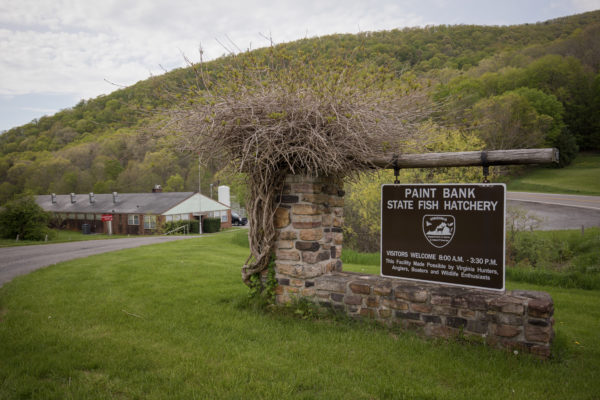
Visit Paint Bank Fish Hatchery
14505 Paint Bank Road, Paint Bank, VA 24131
- Hours: 8:00 AM – 3:30 PM
- Phone: 540-897-5401
- Map & Directions
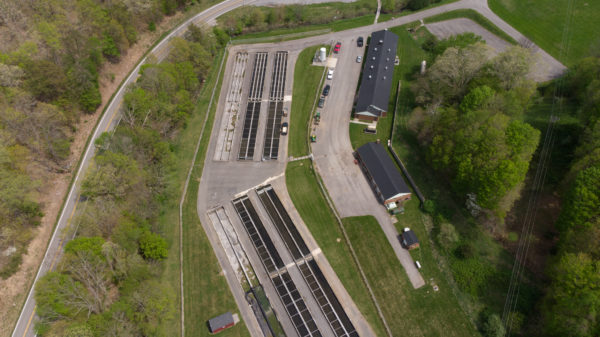 Background
Background
The hatchery is located in Craig County on RT 311 in the town of Paint Bank which is near the West Virginia border. Paint Bank Hatchery was built by the USFWS and opened in 1960. In 1983 it was leased to DWR. About 5 years ago the lease officially was over and DWR retains full ownership. Paint Bank’s water supply is from 3 natural springs located on the property. These spring are affected by drought and siltation when there is a heavy rain event. The water is delivered to the raceways by gravity and underground piping. The springs are not open to the public to keep them protected. The water is very clean and normally between 49–54 degrees F all year. This is a substantial advantage for raising trout.
Production
Production is the amount or lbs. of fish grown at a hatchery. Because of keeping broodstock up to 4 years of age and most all catchable stocking fish averaging about 18 months of age. Lots of fish are grown each year but not stocked. Paint Bank has great production for its small size, usually producing 150,000 lbs. of fish a year with only 32 raceways. The hatchery achieves high rearing densities because of several important factors. LHO (low head oxygenators), design of raceways and water use, spring water to maintain a comfortable rearing environment and no major disease issues.
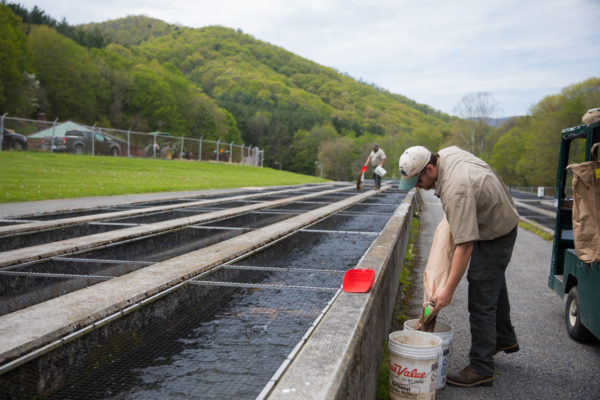
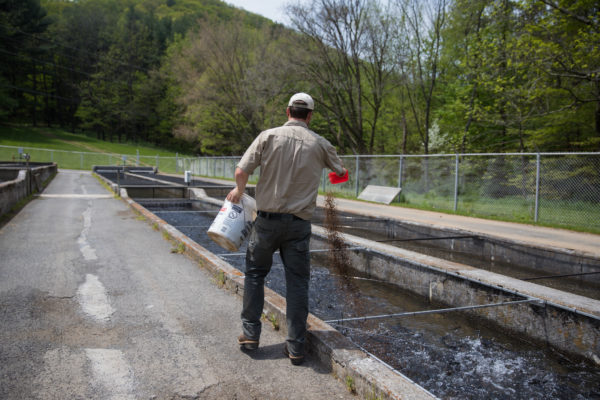
Stocking
Paint Bank Hatchery stocks approximately 100,000 catchable trout in 10 counties 27 different waters each year. The hatchery also stocks approximately 5000 fingerlings (2-3 inches) and 5000 (6-8 inches) advanced fingerlings in 5 counties.
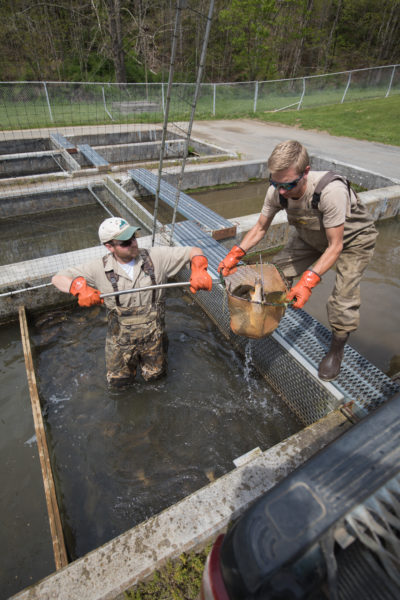 What else does the hatchery do?
What else does the hatchery do?
- Transfers: Paint Hatchery transfers fingerlings, advanced fingerlings and stockers to other DWR hatcheries. It is an integral part of the statewide trout stocking program. In a usual year Paint Bank hatchery will transfer fish to Coursey Spring fish cultural station, Montebello fish cultural station, Wytheville hatchery, Buller Hatchery and sometimes the Marion Hatchery. On an average transfers are 40,000 fingerlings, 95,000 advanced fingerlings, 30,000 catchable fish and 500–750 trophy fish.
- Spawning: Paint Bank keeps in own broodstock (adult breeders) and collects eggs from the fish every year. Between Brook, Brown and Rainbow trout about 4–5 million eggs are taken between June and October.
- National Broodstock system: Paint Bank is considered a grade A disease free facility. The fish are tested twice a year for disease by the USFWS. Because Paint bank’s fish and eggs are considered clean and healthy we participate in the National Broodstock system. The hatchery ships surplus eggs to other state and federal hatcheries. On average the hatchery ships about 1.5 million eggs each year to 5-8 other hatcheries in other states.
- Triploid production: Paint Bank hatchery produces triploids which are genetically sterile fish. These fish are used to stock waters that have native fish stocks already. The triploids can’t reproduce so they pose no threat to the native fish in the form of inbreeding or establishing a reproducing population of stocked fish. Also triploids have the ability to grow faster than normal trout after 2 years old, due to the fact they don’t use energy for gamete production.
- Big fish stocking: Due to Paint Bank hatchery’s population of Broodstock and experience in raising triploids the hatchery stocks a lot of citation size fish each year. These are stocked along with the catchable fish in waters. Although not all fish are citation size they vary from 1.5–10 lbs. With most being 2–5 lbs. approximately 5000 “big fish” are stocked each season.
- TIC: Paint Bank provides eyed Brook trout eggs for trout in the classroom. Usually over 200 schools are given eggs for the program.
 Overview
Overview
Paint Bank only stocks about 17% of the state wide catchable trout. But through transfers it provides other hatcheries with another 25% worth of the statewide allocation. Approximately 90% of the Brook trout stocked in the state started at Paint Bank thru eggs, fingerlings or catchable transfers. The hatchery is considered disease free, is part of the National broodstock program, produces a large amount of triploid eggs and fish, and does all of this with some of the highest rearing densities for a hatchery. The hatchery is a very important part of Virginia’s trout program. The hatchery manager is Brian Beers and the assistant hatchery manager is Zachary Wright.
Images by: Meghan Marchetti/DWR

